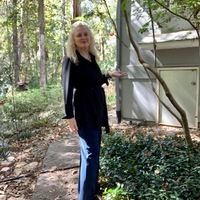Cathleen Giustino
Auburn University, History, Faculty Member
- My specialization is the history of the politics of art, architecture, design and display in modern Central and Eastern Europe, with a focus on Czech and Bohemian culture.edit
Cathleen M. Giustino, "The Ghetto and the Castle: Modern Urban Design and Knowledge Transfer in Historic Prague before and after 1918." In _Interurban Knowledge Exchange in Southern and Eastern Europe, 1870-1950_, eds. Eszter Gantner, Heidi Hein-Kircher and Oliver Hochadel (Routledge, 2020): 25-49.more
Cathleen M. Giustino, "The Ghetto and the Castle: Modern Urban Design and Knowledge Transfer in Historic Prague before and after 1918." In _Interurban Knowledge Exchange in Southern and Eastern Europe, 1870-1950_, eds. Eszter Gantner,... more
Cathleen M. Giustino, "The Ghetto and the Castle: Modern Urban Design and Knowledge Transfer in Historic Prague before and after 1918." In _Interurban Knowledge Exchange in Southern and Eastern Europe, 1870-1950_, eds. Eszter Gantner, Heidi Hein-Kircher and Oliver Hochadel (Routledge, 2020): 25-49.
Research Interests:
Research Interests:
Fin-de-siècle Prague, a provincial capital city in the Habsburg empire, was a site of Czech-German nationality conflict. In 1902 it was also home to the largest exhibition of Auguste Rodin's art outside France during his life. Due to the... more
Fin-de-siècle Prague, a provincial capital city in the Habsburg empire, was a site of Czech-German nationality conflict. In 1902 it was also home to the largest exhibition of Auguste Rodin's art outside France during his life. Due to the nationalism that enveloped Czech culture and politics, the Rodin spectacle was no mere display of modernism. National activists in the Manes Association of Visual Artists, including Stanislav Sucharda and Jan Kotěra, designed the Rodin exhibition to advance Czech cultural maturity through cosmopolitan art and to convince foreigners of the Czech nation's singularity, unity, and progressiveness. Ultimately, though, the events surrounding the exhibition of Rodin's works in Prague projected Czech disagreement over the meanings of folk heritage and western progress for national identity. Still, the blending of modern display and cultural diplomacy strengthened French-Czech relations and in small but significant ways helped secure Czechoslovakia's creation at the end of World War I.
Research Interests:
Research Interests:
Research Interests:
Research Interests:
Research Interests:
The socialist industrial designs displayed in Czechoslovakia’s EXPO ’58 pavilion spoke a visual language understood on both sides of the Iron Curtain, making the pavilion a site of common ground between East and West. The showcase was... more
The socialist industrial designs displayed in Czechoslovakia’s EXPO ’58 pavilion spoke a visual language understood on both sides of the Iron Curtain, making the pavilion a site of common ground between East and West. The showcase was also a point of convergence between Czechoslovak visual artists and Communist Party authorities who engaged in complex political negotiations in the years after Stalin’s death. Visual artists vied for liberation from socialist realism’s constraints, although they kept their demands within limits to avoid risking Party backlash. Communist Party leaders wanted domestic stability and saw improving the living standard as a tactic for insuring popular support. They increasingly perceived industrial design to be a visual-arts activity with special promise. Well-designed furniture, textiles, glass, ceramics and other consumer goods could generate state income useful for raising the living standard at home and earning hard currency abroad. The Party needed the designers’ cooperation to achieve efficient, attractive production within the command economy. In the Brussels showcase communist authorities compromised with visual artists helping to insure the latter’s support and success, demonstrating that culture in postwar Czechoslovakia was not merely imposed ‘from above’ by omnipotent authorities but could be the outcome of multidirectional negotiations between various competing interests.
Research Interests:
“Ein Roman als Ausstellungsparcours in der sozialistischen Tschechoslowakei:
Fiktion, Wirklichkeit und Interieurs im Großmuttertal.” In: Wohnen Zeigen, ed. Irene Nierhaus and Andreas Nierhaus (Vienna: Transcript, 2014), 287-302.
Fiktion, Wirklichkeit und Interieurs im Großmuttertal.” In: Wohnen Zeigen, ed. Irene Nierhaus and Andreas Nierhaus (Vienna: Transcript, 2014), 287-302.
